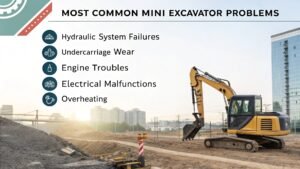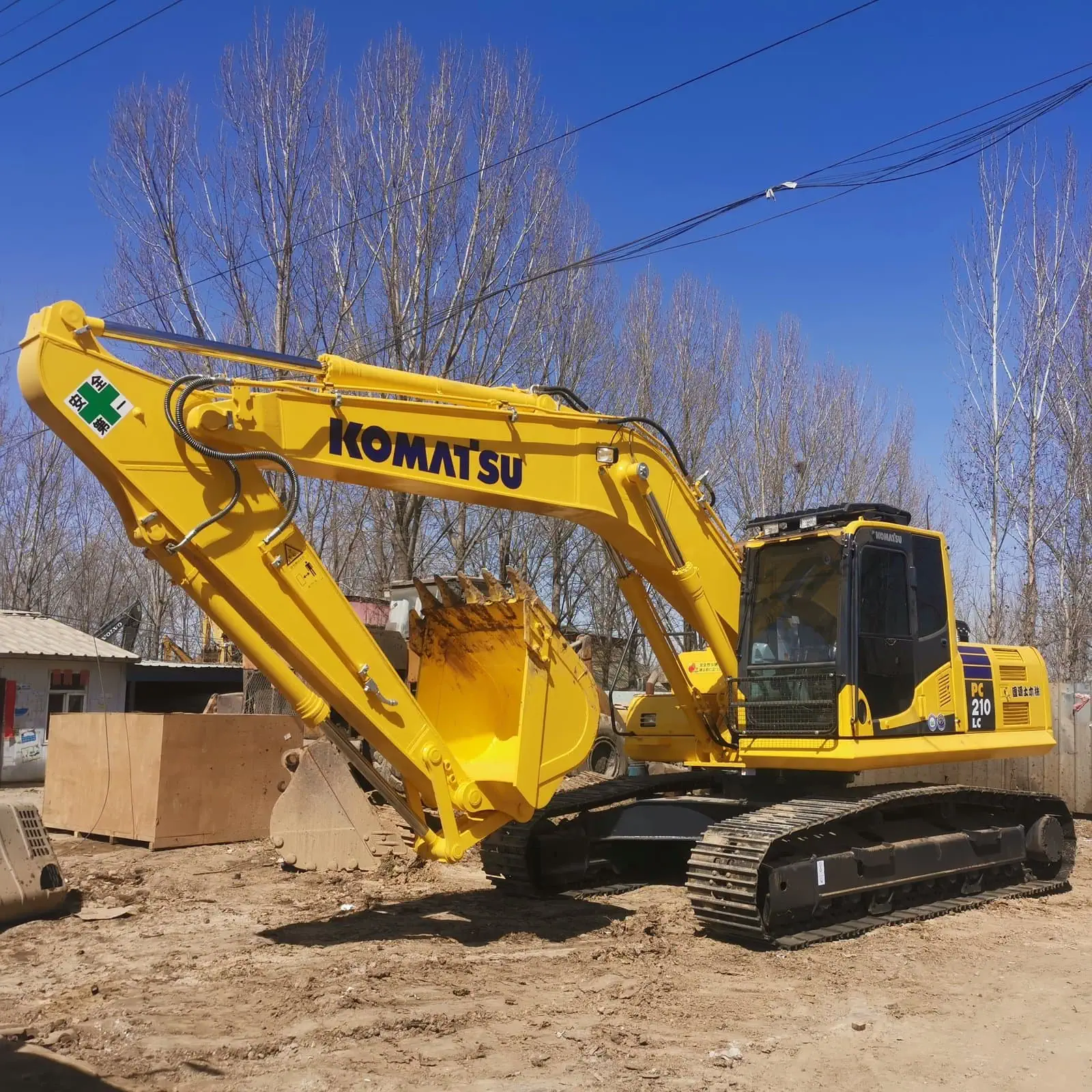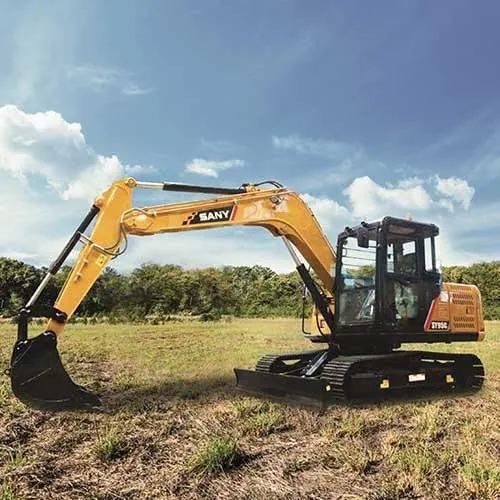With so many choices to pick from, you may feel overwhelmed when trying to decide which Caterpillar excavator model best suits your project. It’s critical to select the right model because choosing the wrong model can result in needless expenditures and delays. In this guide, we’ll walk you through the Caterpillar Excavator Models List to help you choose the perfect machine for your project.
With numerous models in the Caterpillar Excavator Models List, selecting the right one depends on your project type and specifications. Whether it’s urban construction, earthmoving, or heavy-duty applications, each model offers distinct advantages. This guide provides expert insights into key factors such as engine power, hydraulic systems, and overall performance, helping you make an informed decision.
Are you ready to dig in and figure out which excavator model is right for your project? Let’s go through the criteria.
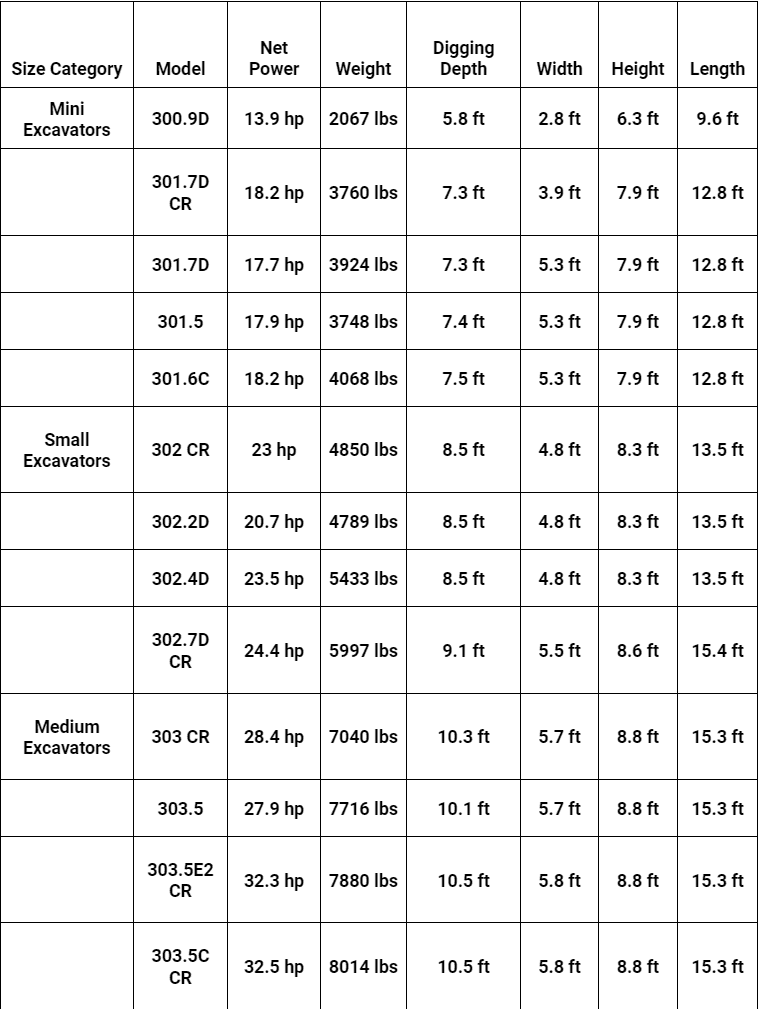
Table of Contents
ToggleUnderstanding Your Project Needs
Why Project Type Matters
The type of project you’re doing will drastically impact which spec is the most important to you. Whether you’re doing small-scale urban construction, a large earth moving project, heavy-duty work like mining, or anything in between, different models excel in certain areas that cater to each type of work. Figure out what you’re doing and pick the right excavator from the Caterpillar Excavator Models List.
| Project Type | Recommended Models | Key Features |
| Urban Construction | CAT 312D, CAT 318D | Compact size, excellent maneuverability for tight spaces |
| Earthmoving and Grading | CAT 330, CAT 336 | High digging depth, large bucket capacity for leveling and material movement |
| Heavy-Duty Applications | CAT 345, CAT 390 | High stability and lifting capacity for mining, demolition, and tough environments |
Important Factors to Consider
Here are a few things to think about before choosing a model to make sure it meets your project’s requirements:
- Terrain Type: Select a model based on the type of soil or rock you will be working in. If you’re working in rocky or hard soil, you’ll want a larger model like the CAT 345 or CAT 390. If you’re working in softer ground, you would be better off with a smaller model like the CAT 312D.
- Lift Capacity & Reach: Bigger jobs require more lift capacity and longer reach. Smaller jobs may not need as much lift capacity, which could be found in something like the CAT 320.
- Operating Weight & Stability: The higher the operating weight of the excavator (like a CAT 345), the more stability it will have. It’s great for big, heavy-duty jobs, but you wouldn’t want it on a compact site or in an urban setting due to its size.
How to Choose the Right Caterpillar Excavator Model for Urban Construction Projects?
When working on urban construction projects, you often have to work in tight, confined spaces. Since you can’t open up the site to use larger machines, you need to pick one model that is compact in design, yet still strong and powerful. The reason compact construction equipment is so popular on urban work sites is the fact that they give contractors the ability to do a lot of work in smaller, tighter areas. A great example of the compact work that these machines can do is the Cat 312D and 318D. Both of these are designed specifically to work in confined spaces.
| Model | Operating Weight (kg) | Digging Depth (m) | Reach (m) | Bucket Capacity (m³) | Engine Power (HP) |
| CAT 312D | 11,200 | 6 | 7.4 | 0.45 | 101 |
| CAT 318D | 18,300 | 7 | 8 | 0.6 | 148 |
The CAT 312D is ideal for those smaller, tight spaces. The CAT 318D is perfect for when you still need a compact design, but you require more reach and digging depth on slightly larger urban sites. The 318D extends and retracts beyond the track frame, increasing its capabilities. The 318D provides a wide range of possibilities for excavation and demolition work, all while maintaining the efficiency and precision you need. The 318D also excels in applications where you need higher lifting abilities, such as lifting heavy materials up to multi-story buildings.
Take into consideration how tight the urban environment is. Not only do you have to get a machine into the area, but you also have to be able to work around obstacles, close to buildings, and in a narrow job site. Compact models like the CAT 312D and CAT 318D are perfect for working in close quarters. They are made to do the work you need to accomplish and get in and get out, helping you to get your job done on time and on budget.
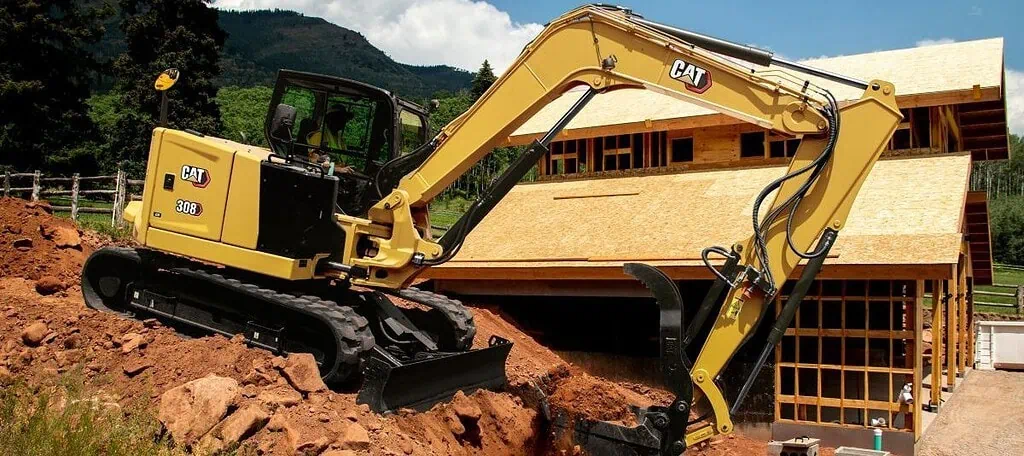
Selecting the Best Caterpillar Excavator Models for Earthmoving and Grading
When moving a lot of dirt, doing mass excavation or rough grading on a large earthmoving project, that’s when you want a larger excavator with a big engine and a lot of digging capability. These are the kinds of applications
where models like the CAT 330 and CAT 336 are used. They have a lot of engine power and digging capability, so they can move a lot of dirt. They’re great for doing things like spreading out topsoil and doing finish grading to
make the project look nice.
| Model | Engine Power (HP) | Digging Depth (m) | Bucket Capacity (m³) | Fuel Efficiency (L/hr) | Operating Weight (kg) |
| CAT 330 | 210 | 7.5 | 1.5 | 13-15 | 25,000 |
| CAT 336 | 260 | 8.5 | 2 | 15-17 | 35,000 |
The 330 is an excellent choice for general earthmoving work. It’s very fuel efficient and has great digging depth for most medium to large construction projects where you’re trying to get a lot done. The CAT 336, on the other hand, is designed for bigger, more demanding jobs such as excavation and mass grading. With the big engine and larger bucket capacity, the 336 is what you need when you have a lot to do.
Intensive applications are the big paydays for the CAT 345 and CAT 390.These are for those of you in extreme environments that the other machines just won’t handle effectively. Or, because of the performance, this is the
best excavator for your work. Please keep one thing in mind with these excavators: You’ve got to have the space to run them.
Key Specifications to Consider
Engine Power and Fuel Efficiency
Heavy-duty tasks like cutting rock or trenching in hard materials, as well as long reach work, can require a 336D or similar bigger machine. These machines typically have a large Cummins or Caterpillar engine, which are more powerful and quicker than smaller machines. This is especially true if you are rock trenching or working in hard materials. If all you’re doing is general construction, a CAT 320D is hard to beat. For long reach and heavy-duty work, you will need a CAT 336D.
| Model | Engine Power (HP) | Fuel Efficiency (L/hr) | Operating Weight (kg) |
| CAT 320D | 163 | 10-12 | 19,000 |
| CAT 330D | 210 | 12-14 | 24,000 |
| CAT 336D | 260 | 14-16 | 30,000 |
As shown in the chart above, the CAT 320D is fuel-efficient, making it suitable for general construction projects. On the other hand, the CAT 336D offers more power for heavy-duty work, but it consumes more fuel.
Hydraulic Systems
Hydraulic systems are critical for efficient operation, especially on tasks involving digging, lifting, material handling, etc. CAT 336D, for example, features advanced hydraulic systems providing more digging force, and they actually consume less fuel when you’re digging for an extended period.
| Model | Hydraulic System Type | Digging Force (kN) |
| CAT 320D | Closed-loop | 145 |
| CAT 336D | Open-loop | 205 |
Size and Maneuverability
The size of the machine is an important consideration. A CAT 345 is a great big machine, really stable, and you can just bust some serious dirt with it. But you probably can’t get it in a building or in a tight spot. If you’ve got a tight project, you’ll want the CAT 312D, or maybe the CAT 318D, because you can get it in the tight area and work around a structure with the flexibility and precision you need.
| Model | Size (m) | Maneuverability | Ideal Use |
| CAT 312D | 6.0 x 2.3 | Excellent | Urban construction, small sites |
| CAT 345 | 12.2 x 3.4 | Limited | Heavy-duty applications, mining |
How to Choose the Right Caterpillar Excavator Models for Heavy-Duty Applications
In a heavy-duty application like mining or demolition, you need a big excavator. You need to be able to lift a lot of weight, and you need something that’s robustly built to handle tough conditions. The big hydraulic excavators like the CAT 345 and CAT 390 have massive engines, huge hydraulic systems, and are super-stable and durable to handle almost any condition you can throw at them.
| Model | Lifting Capacity (kg) | Engine Power (HP) | Operating Weight (kg) | Ideal Use |
| CAT 345 | 19,000 | 350 | 42,000 | Mining, heavy-duty applications |
| CAT 390 | 24,000 | 400 | 47,000 | Demolition, tough construction jobs |
Those machines are built to do the heavy-duty work where performance and reliability are what it’s all about.

How to Compare Different Models on the Caterpillar Excavator Models List
Performance Comparison
When you’re evaluating a machine, you want to know the digging force, the fuel efficiency, and the productivity. Here’s a direct side-by-side of a CAT 330F and a CAT 336D:
| Model | Digging Force (kN) | Fuel Efficiency (L/hr) | Bucket Capacity (m³) |
| CAT 330F | 179 | 12月14日 | 1.7 |
| CAT 336D | 205 | 14-16 | 2 |
Maintenance and Longevity
Your maintenance costs will also vary depending on which machine you have. That factors into your decision because you don’t want to just look at the price tag. You need to look at the overall cost of the machine over its lifetime. A CAT 330 and a CAT 320 both generally have really low maintenance costs. But the CAT 390 is a bigger machine, so everything is bigger and more expensive when you need to work on it.
| Model | Average Lifespan (hrs) | Maintenance Costs (annual) |
| CAT 330 | 12,000 | $3,000 |
| CAT 390 | 15,000 | $5,000 |
Attachments and Customization
Certain tasks require attachments like buckets, hydraulic hammers, and grapples. Make sure the machine you choose will accept the attachments you need to do the job. For example, a CAT 336D will work with just about any bucket, hydraulic hammer, or whatever you need to get the job done. So, make sure you find a machine you can put that stuff on.
Budget Considerations
New vs Used Models
On the other hand, buying a used Caterpillar excavator allows you to acquire the equipment at a lower cost. Depending on the age of the model and the number of hours on the engine, you can save tens of thousands of
dollars. The downside to buying a used excavator is that it may have been abused or improperly maintained by the previous owner. You could inherit someone else’s problems, which can become costly in terms of repairs and
downtime. Additionally, the technology and features on a used excavator may be outdated compared to a new model.
This includes checking for leaks, inspecting the undercarriage and bucket, and testing the hydraulics and electrical system. If you discover any problems or potential issues, be sure to negotiate the price accordingly.
| Model | New Price | Used Price | Depreciation Rate |
| CAT 330 | $180,000 | $130,000 | 10% |
| CAT 336D | $250,000 | $180,000 | 15% |
Also, take the depreciation rate into consideration. The CAT 330 has a low depreciation rate (10%), meaning it holds its value well over time. If you want to get the most for your money when buying an excavator, purchasing a used Caterpillar model like the CAT 330 or a CAT 336D might be a better option financially. Just make sure it has been well maintained and is in good working condition.
Which Models Offer the Best Value?
When you balance cost against what you get in terms of quality and performance, you can find a good value with certain machines. The CAT 320D is a good example. It’s reasonably priced, fuel efficient, and will perform well in the long run. Newer contractors or companies on a budget can buy a CAT 320D and use it for general construction and as a production machine. Because of its strong resale value, you can recover some of your initial investment when you’re ready to sell.
For heavy lifting or specialized work, the CAT 330 and CAT 336D also stand out as offering excellent long-term value. Each of these models will perform well without guzzling fuel, giving them a great balance of performance and price. You can use a CAT 330 or CAT 336D for moving dirt, grading or even demolition work. While their initial price is higher, their long-life and low operating costs make them worth it in the long run.
| Model | Price | Fuel Efficiency (L/hr) | Average Lifespan (hrs) | Resale Value |
| CAT 320D | $130,000 | 12-15 | 10,000 | High |
| CAT 330 | $180,000 | 13-16 | 12,000 | Medium |
| CAT 336D | $250,000 | 14-17 | 15,000 | Medium |
Selecting Based on Availability and Dealer Support
When you’re looking to buy an excavator, the specs are one thing to consider, but you want to think about the availability of parts and service support as well. A strong dealer network ensures you can get replacement parts and quality service after the sale to minimize down time and keep your machine running well. Caterpillar has a huge presence worldwide. They have an extensive dealer network around the globe, so you have service centers, parts, and technical support for your Caterpillar excavator model wherever you’re working.
For instance, the CAT 320D has high global dealer availability, so you can source parts and service readily. On the other hand, the CAT 390 is a heavier machine and has medium availability and fewer service centers around the world. While the CAT 390 is a machine you can consider for heavy-duty applications, be aware that you need to have good service options available to you in remote areas or other places where there are fewer dealers.
| Model | Global Dealer Availability | Service Centers |
| CAT 320D | High | Extensive |
| CAT 390 | Medium | Limited |
If you’re operating in multiple regions or countries, it could make sense to look at the CAT 320D because it has a strong dealer support network. That means you won’t have long delays waiting for parts or repairs. On the other hand, something like the CAT 390, which is great for heavy-duty applications, may not be ideal for you if you have to deal with long downtime during repairs or if you’re in an area that doesn’t have a lot of service options.
You will most likely find that there are one or two dealers in your area that are obviously the ones everyone gets their forklifts from. You can order from them with confidence that you will get good dealer support.
Conclusion
Choosing the right Caterpillar excavator model involves understanding your requirements and matching those up with the best models from the Caterpillar Excavator Models List. Consider factors such as engine power, size, fuel efficiency, and the type of work you do to make your decision. Also, keep in mind the long-term costs, dealer support, and resale value to make sure you get a machine that will last for you for years to come.
Our company HIXEN specializes in all kinds of second-hand construction machinery. If you need a second-hand excavator for your project, or if you have any questions about second-hand excavators, please contact me.

